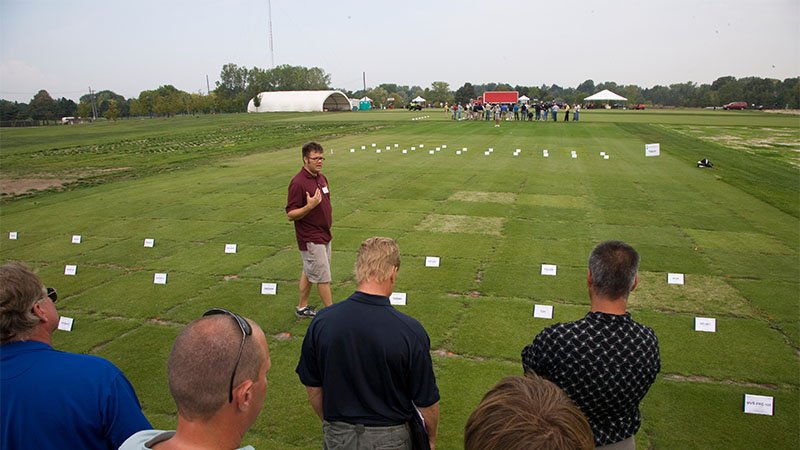
The USGA will fund 73 research grants this year totaling nearly $2 million to help superintendents maximize conditions and the golfer experience while minimizing inputs.
The 2020 grant recipients – 16 of which involve new projects – will receive an average of $25,000 this year. Notable grant support includes a focus on conserving water by better understanding new technologies and the social aspects of irrigation scheduling through the University of California at Riverside, in addition to a continuing effort to define the value of golf courses from an ecosystem services perspective through the University of Minnesota.
Since the founding of the Green Section in 1920, the USGA has supported the largest private turfgrass and environmental research effort in the history of golf. The USGA Turfgrass and Environmental Research Program, which is one of several continuous efforts led by the Green Section aimed at enhancing golf course sustainability, develops and supports research that produces a healthier environment and improved playing conditions.
Since the research program’s inception, the USGA has invested more than $41 million to advance golf by using science and innovation as the foundation to impact thousands of courses and millions of golfers.
Led by Cole Thompson, Ph.D., the research program is part of the USGA’s mission to advance the game through an annual $10 million investment to support the health of courses. Universities or research companies submit grant applications that are reviewed by 17 scientists on the TERP committee. As part of its ongoing mission to advance the game, the USGA will complement current turfgrass and environmental research with projects that benefit other areas of course sustainability, including golfer experience.
Collectively, superintendents across the country have reduced overall water use by 19 percent since 2005.
Recipients include Environmental & Turf Services, Kansas State Univeristy, University of Minnesota, Loyola University Chicago, Rutgers University, Penn State, University of Nebraska, Oklahoma State University, U.S. Department of Agriculture, University of Florida, Texas A&M, University of California at Riverside, Purdue University, Cal Poly Pomona, University of Georgia, University of Arkansas, University of Wisconsin, Virginia Tech, University of Massachusetts, New Mexico State University, Colorado State University, Oregon State University, Michigan State University, University of Wisconsin, North Dakota State University, North Carolina State University, University of Tennessee, University of Nevada Las Vegas, Ohio State University, Texas Tech and the University of Connecticut.
Through the program’s emphasis on sustainable turfgrass management and environmental protection, the USGA has improved the efficiency of key areas of course management, including water conservation, pesticide and nutrient distribution, and turfgrass breeding.
Collectively, superintendents across the country have reduced overall water use by 19 percent since 2005, in part due to research-based irrigation methods such as employing weather data in plant water-use estimates, replacing potable irrigation water with recycled wastewater, the adoption of precision irrigation technologies and improved educational opportunities for superintendents.
USGA research has contributed to the reduction of an estimated 86,000 tons of annual fertilizer use on golf courses since 2007 and has defined application strategies that limit the transport of nutrients to surface water and groundwater.
USGA-supported turfgrass breeding programs have developed more than 30 cultivars that use fewer resources and produce better playing conditions. These cultivars have been used worldwide in golf, sports turf and residential lawns.
Research from the program also has contributed to USGA recommendations for putting green construction.

